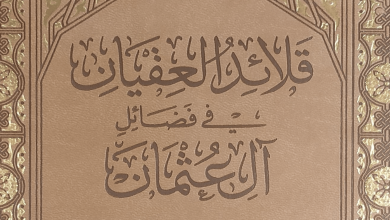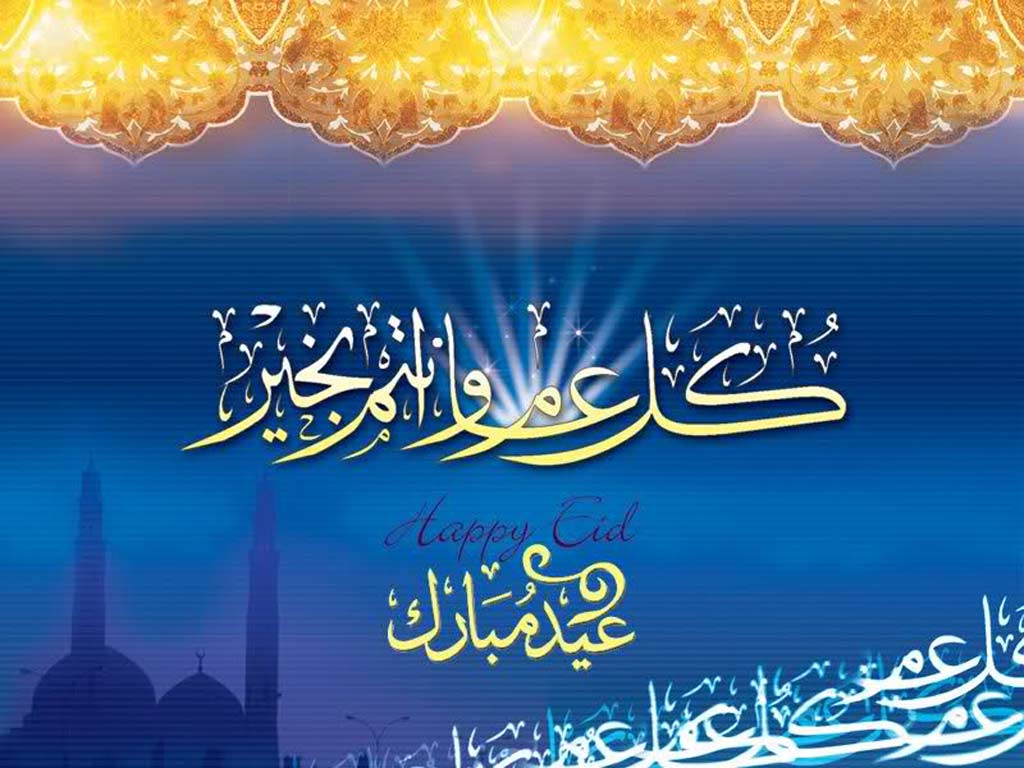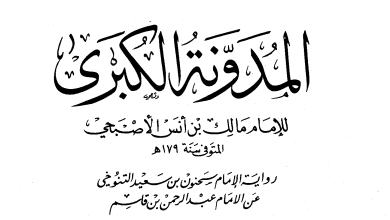THE PROPHET’S ﷺ TAWASSUL AS IN THE FATIMA BINT ASAD (RA) HADITH: A REPLY TO SALAFIS
Back in September 2017 a website calling itself the Salafi Research institute published an online article entitled: “Dismantling the Proofs for Tawassul and Istigathā with Conclusive Evidences: The hadith of Fatimah bint Asad and the tawassul of the messenger of allah ﷺ Through Himself and the Prophets”.[1] It was in their own words: Compiled, Translated & Annotated: Abū Ḥibbān Malak[2] & Abū Khuzaimah ʿImrān Masoom Anṣārī.
Imam Abul Qasim al-Tabarani (d. 360 AH) related the following Hadith in his al-Mu’jam al-Kabir (24/351-352):
حَدَّثَنَا أَحْمَدُ بْنُ حَمَّادِ بْنِ زُغْبَةَ، ثنا رَوْحُ بْنُ صَلَاحٍ، ثنا سُفْيَانُ الثَّوْرِيُّ، عَنْ عَاصِمٍ الْأَحْوَلِ، عَنْ أَنَسِ بْنِ مَالِكٍ، قَالَ: لَمَّا مَاتَتْ فَاطِمَةُ بِنْتُ أَسَدِ بْنِ هَاشِمٍ أُمُّ عَلِيِّ بْنِ أَبِي طَالِبٍ، دَخَلَ عَلَيْهَا رَسُولُ اللهِ صَلَّى اللهُ عَلَيْهِ وَسَلَّمَ: فَجَلَسَ عِنْدَ رَأْسِهَا فَقَالَ: «رَحِمَكِ اللهُ يَا أُمِّي، كُنْتِ أُمِّي بَعْدَ أُمِّي، وتُشْبِعِينِي وتَعْرَيْنَ، وتُكْسِينِي، وتَمْنَعِينَ نَفْسَكِ طَيِّبًا، وتُطْعِمِينِي تُرِيدِينَ بِذَلِكَ وَجْهَ اللهِ وَالدَّارَ الْآخِرَةَ» ، ثُمَّ أَمَرَ أَنْ تُغَسَّلَ ثَلَاثًا، فَلَمَّا بَلَغَ الْمَاءُ الَّذِي فِيهِ الْكَافُورُ سَكَبَهُ رَسُولُ اللهِ صَلَّى اللهُ عَلَيْهِ وَسَلَّمَ بِيَدِهِ، ثُمَّ خَلَعَ رَسُولُ اللهِ صَلَّى اللهُ عَلَيْهِ وَسَلَّمَ قَمِيصَهُ فَأَلْبَسَهَا إِيَّاهُ وَكَفَّنَهَا بِبُرْدٍ فَوْقَهُ، ثُمَّ دَعَا رَسُولُ اللهِ صَلَّى اللهُ عَلَيْهِ وَسَلَّمَ أُسَامَةَ بْنَ زَيْدٍ، وَأَبَا أَيُّوبَ الْأَنْصَارِيَّ، وَعُمَرَ بْنَ الْخَطَّابِ، وَغُلَامًا أَسْوَدَ يَحْفُرُونَ فَحَفَرُوا قَبْرَهَا فَلَمَّا بَلَغُوا اللَّحْدَ حَفَرَهُ رَسُولُ اللهِ صَلَّى اللهُ عَلَيْهِ وَسَلَّمَ بِيَدِهِ، وَأَخْرَجَ تُرَابَهُ بِيَدِهِ، فَلَمَّا فَرَغَ دَخَلَ رَسُولُ اللهِ صَلَّى اللهُ عَلَيْهِ وَسَلَّمَ: فَاضْطَجَعَ فِيهِ، ثُمَّ قَالَ: «اللهُ الَّذِي يُحْيِي وَيُمِيتُ وَهُوَ حَيٌّ لَا يَمُوتُ، اغْفِرْ لِأُمِّي فَاطِمَةَ بِنْتِ أَسَدٍ، ولَقِّنْهَا حُجَّتَها، وَوَسِّعْ عَلَيْهَا مُدْخَلَهَا، بِحَقِّ نَبِيِّكَ وَالْأَنْبِيَاءِ الَّذِينَ مِنْ قَبْلِي فَإِنَّكَ أَرْحَمُ الرَّاحِمِينَ» وَكَبَّرَ عَلَيْهَا أَرْبَعًا، وأَدْخَلُوها اللَّحْدَ هُوَ وَالْعَبَّاسُ، وَأَبُو بَكْرٍ الصِّدِّيقُ رَضِيَ اللهُ عَنْهُمْ
Meaning:
Narrated to us Ahmad bin Hammad bin Zughba, narrated to us Rawh bin Salah, narrated to us Sufyan al-Thawri, from ‘Asim al-Ahwal, from Anas bin Malik, who said: When Fatimah bint Asad bin Hashim, the mother of Ali bin Abi Talib, died, the Messenger of Allah (peace be upon him) entered upon her and sat by her head and said: “May Allah have mercy on you, O my mother. You were a mother to me after my mother. You would satisfy my hunger and clothe me, while depriving yourself of good things, and feeding me, seeking thereby the countenance of Allah and the Hereafter.”
Then he ordered that she be washed three times, and when the water containing camphor was brought, the Messenger of Allah (peace be upon him) poured it with his own hand. Then the Messenger of Allah (peace be upon him) took off his shirt and clothed her with it and shrouded her with a cloak over it. Then the Messenger of Allah (peace be upon him) called Usamah bin Zayd, Abu Ayyub Al-Ansari, ‘Umar bin Al-Khattab, and a black slave to dig, so they dug her grave. When they reached the niche (lahd), the Messenger of Allah (peace be upon him) dug it with his own hand and removed its soil with his own hand. When he finished, the Messenger of Allah (peace be upon him) entered and lay down in it, then said: “Allah is the One Who gives life and causes death, and He is Ever Living and does not die. Forgive my mother Fatimah bint Asad, instruct her with her proof, and expand her entrance, by the right (Haqq/mediation) of Your Prophet (Muhammad) and the Prophets who came before me, for indeed You are the Most Merciful of those who show mercy.” And he said “Allahu Akbar” over her four times, and they entered her into the niche, him, Al-‘Abbas, and Abu Bakr As-Siddiq, may Allah be pleased with them.
The above narration was rejected by certain Salafis in Arabic and in English.
[1] Uploaded here – https://www.salafiri.com/pinned-ebook-dismantling-the-proofs-for-tawassul-and-istigatha-with-conclusive-evidences-part-2-the-%E1%B8%A5adith-of-fatimah-bint-asad-radiallahu-anha-and-the-tawassul-of-me/
[2] Strangely they have spelt the name Malak as Malik in other works they put out.
- This reply provided a thorough substantiation of the veracity of the Tawassul hadith narration related to Fatima bint Asad (ra), the mother of Ali ibn Abi Talib (ra). It countered the scepticism concerning the legitimacy of this narration; a scepticism propagated primarily by a group of contemporary Salafi scholars.
- This work methodically scrutinized the critiques advanced against the narrator Rawh ibn Salah by eminent Hadith scholars including Ibn Adi, al-Daraqutni, Ibn Makula, Ibn al-Jawzi, and others. It proposed that these critiques were vague and bereft of substantial detail, thereby proving inadequate to categorize Rawh as a weak narrator overall.
- This work drew upon principles put forth by Hadith scholars such as Ibn al-Salah, al-Nawawi, and also Salafi writers. These principles contended that vague criticism (Jarh mubham) was not considered acceptable when there was concurrent praise (Ta’dil/tawthiq) for a narrator. Case studies were presented featuring other narrators who also had Jarh mubham upon them.
- This work critically assessed the statement attributed to Ibn Yunus regarding Rawh’s purported transmission of rejected narrations. It argued that the statement was erroneous and lacked supporting evidence from the actual documented work of Ibn Yunus., as well as through quotations from his work by other scholars like Ibn Tahir al-Maqdisi and al-Sam’ani.
- The work defended the integrity of the sub-narrators who transmitted this hadith as recorded by al-Tabarani, as well as addressing the claim that there was a break in the chain between Rawh ibn Salah and Sufyan al-Thawri.
- The work also addressed the claim of tadlis regarding Sufyan al-Thawri.
- The work suggested that the endorsement of Rawh ibn Salah by scholars such as Ya’qub ibn Sufyan al-Fasawi, Ibn Hibban, al-Hakim, Ibn Qutlubugha and others was not an excessive act of generosity or leniency. It also referenced principles provided by Salafi scholars that bolstered this argument.
- This work also demonstrated the authenticity of a report regarding Ya’qub ibn Sufyan al-Fasawi’s teachers being generally from the trustworthy (Thiqat) narrators.
- The work contended that the hadith narration possessed a legitimate and reliable chain of transmission, thereby challenging certain Salafi contentions to the contrary. A plethora of scholars, mainly from the past, were mentioned either authenticating the Fatima bint Asad (ra) narration, or mentioning it with some form of silent approval. The following scholars were mentioned within the relevant sections:
1) Imam Abul Ma’ali Bahaud-Din Muhammad ibn al-Hasan (d. 562 AH)
2) Imam Abul Khattab ibn Dihya al-Kalbi (d. 633 AH)
3) Imam Abu Abdullah Shamsud-Din Muhammad al-Qurtubi (d. 671 AH)
4) Imam Taqiuddin al-Subki (d. 756 AH)
5) Imam Nurud-Din Ibn al-Sabbagh al-Maliki al-Makki (d.855 AH)
6) Imam Nuruddin al-Samhudi (d. 911 AH)
7) Imam Shihabuddin al-Qastallani (d. 923 AH)
8) Imam Muhammad ibn Dawud al-Bazili (d. 925 AH)
9) Imam Shamsud-Din Muhammad ibn Umar al-Safiri (d. 956 AH)
10) Imam Ahmed ibn Hajar al-Haytami (d. 974 AH)
11) Imam Muhammad Ali ibn Allan al-Bakri al-Shafi’i (d. 1057 AH)
12) Imam Abdul Malik al-Isami al-Makki (d. 1111 AH)
13) Imam Muhammad Murtada al-Zabidi al-Hanafi (d. 1205 AH)
14) Imam Sayyid Alawi al-Haddad (d. 1216 AH/1801 CE)
15) Shaykh Muhammad ibn Ali al-Shawkani (d. 1250 AH/1834 CE)
16) Shaykh Dawud ibn Sulayman al-Baghdadi (d. 1881 CE)
17) Shaykh Ahmed ibn Zayni Dahlan (d. 1886 CE)
18) Shaykh Ibrahim al-Samnudi (d. 1908 CE)
19) Shaykh Yusuf al-Nabhani (d. 1932 CE)
20) Shaykh Jamil Effendi al-Zahawi (d. 1936 CE)
21) Shaykh Muhammad Habibullah al-Shanqiti (d. 1944 CE)
22) Shaykh Yusuf al-Dajawi (d. 1946 CE)
23) Shaykh Muhammad Zahid al-Kawthari (d. 1952 CE)
24) Shaykh Salama al-Azzami (d. 1956 CE)
25) Shaykh Muhammad al-Hamid (d. 1969 CE)
26) Shaykh Muhammad al-Arabi al-Tabbani al-Makki (d. 1970 CE)
27) Shaykh Muhammad Khalil al-Khatib al-Azhari (1986 CE)
28) Shaykh Muhammad Khalil al-Khatib al-Azhari (1986 CE)
29) Shaykh Abdullah al-Ghumari (d. 1993 CE) and his students like the two names below:
30) Shaykh Muhammad ibn Alawi al-Maliki (d. 2004)
31) Shaykh Mahmud Saeed Mamduh
32) Shaykh Fathi Sa’eed Umar al-Hujayri (whose named work was endorsed by the following three names:
33) Shaykh Muhammad Ibrahim Abd al-Ba’ith al-Kattani
34) Shaykh Usama al-Sayyid Mahmud al-Azhari
35) Shaykh Jamal Faruq al-Daqqaq al-Azhari.
36) Dr. Isa al-Himyari
37) Shaykh Abdul Hadi al-Kharsa
38) Shaykh Abul Mundhir Sami Anwar Jahin
39) Shaykh al-Hajj Malik Bah, (whose work was endorsed by eight scholars)
40) Shaykh Sa’eed Abdul Fattah
- The work also responded to a challenge by Abu Khuzaimah Ansari regarding the authenticity of a narration about the grave of Imam al-Bukhari as recorded by al-Dhahabi in his Siyar a’lam an-Nubala from Imam al-Ghassani’s Taqyid al-Muhmal.
- The work also provided evidence of al-Dhahabi’s views connected to the graves of certain pious individuals, as well as what some Salafis have contended against him.
- A challenge was issued to Abu Khuzaimah to utilize the same principle he raised about al-Dhahabi’s quotation from al-Ghassani in order to prove that Sharhus Sunna was compiled by al-Barbahari, and with the stipulation of providing an authentic chain (sanad) going all the way back to al-Barbahari to unequivocally prove this.
- The work also demonstrated that some notable Hanbali/Athari scholars of the past permitted the type of Tawassul that contemporary Salafis demean and reject with harsh manners and unacademic language.
In conclusion, the narration of Fatima bint Asad (ra) is Sahih as per the conditions of Ibn Hibban and his disciple al-Hakim, while other scholars have deemed it to be a type of Hasan/Jayyid (good) narration in terms of its authenticity. The position of it being a weak narration was not a notable stance throughout Islamic history, but posited mainly by revisionists from the self-acclaimed Salafi sect.
Peace and blessings be upon Sayyiduna Muhammad
Compiled by:
Abul Hasan Hussain Ahmed
Darut-Tahqiq (darultahqiq.com). London, England
27th of Ramadan-1445 AH/April 7th 2024
The full reply in excess of 450 pages is available to download – HERE






